13 Rare MotoGP Bikes Collectors Dream About
Some of the rarest motorcycles in MotoGP carry stories of risk, innovation, and short-lived glory. These machines stood out for their unique designs, limited runs, or the brief time they spent on the track. While a few went on to make history, others faded quickly yet left a mark that fans still remember today. This list looks back at those special bikes that remain among the rarest in MotoGP history.
This post may contain affiliate links, which helps keep this content free. Please read our disclosure for more info.
Honda NSR500 (1992 Rothmans Edition)
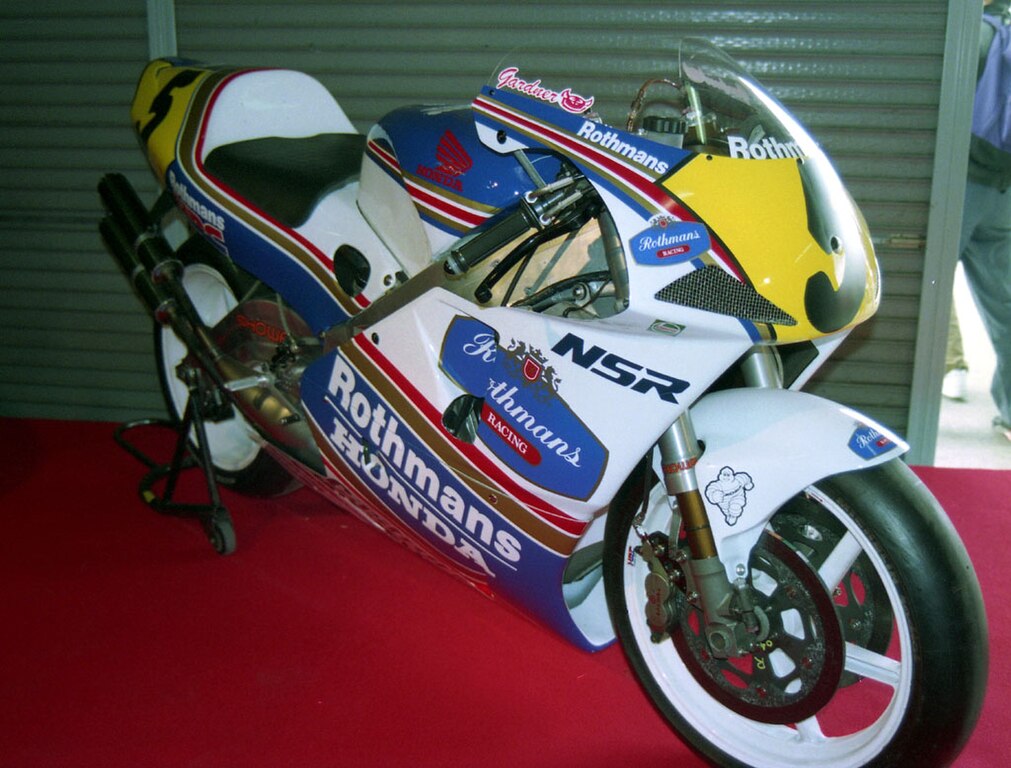
The Honda NSR500 dominated the two-stroke era with a combination of raw speed and race-winning balance. The Rothmans-liveried version from 1992 became a symbol of MotoGP’s golden years, carrying riders like Mick Doohan and Wayne Gardner to the front of the grid. With its aggressive handling and powerband, it was a handful for even the most experienced racers. Few remain in complete condition, making surviving examples highly prized.
Collectors often view the Rothmans NSR500 as a turning point for Honda’s racing efforts. Its design reflected Honda’s push to refine two-stroke technology before four-strokes took over. Today, the bike is seen as a bridge between brutal early machines and the more refined ones that followed. Museums and private collections carefully guard the few still in existence.
Yamaha YZR500 (Wayne Rainey’s 1993 Bike)
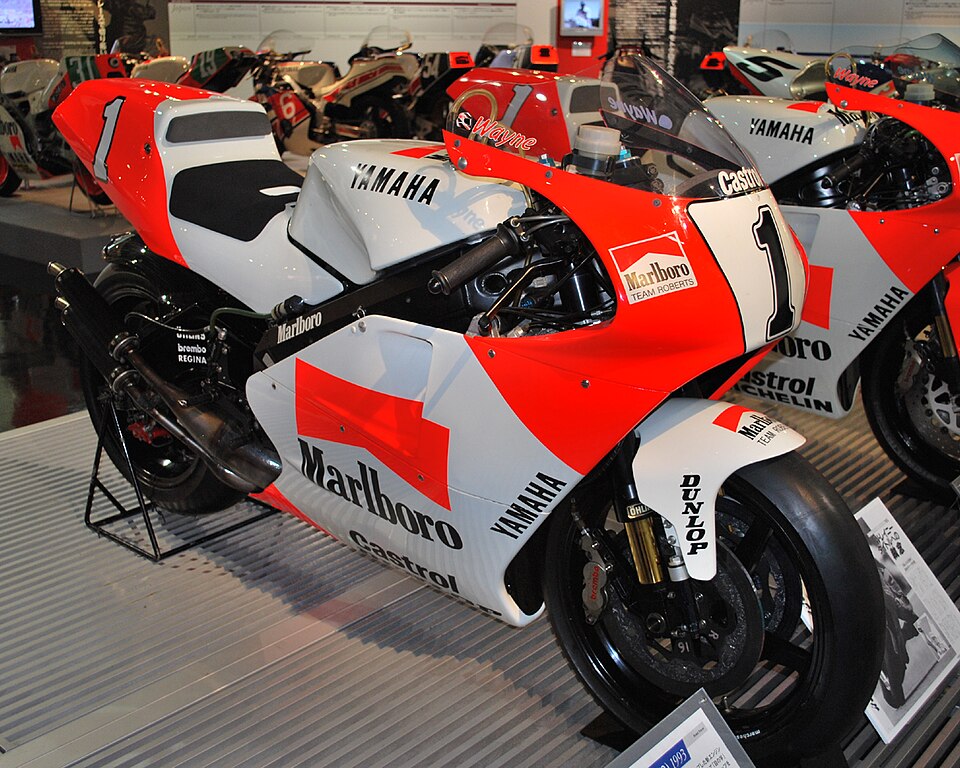
Wayne Rainey’s 1993 Yamaha YZR500 carries an aura of triumph mixed with tragedy. The bike powered him to multiple wins before his career-ending accident at Misano. Built with razor-sharp handling and a demanding two-stroke engine, it required an exact riding style. Very few authentic examples tied to Rainey’s championship run still exist.
The YZR500 holds a unique place in racing history because of its connection to one of MotoGP’s great rivalries. The battles between Rainey, Schwantz, and Doohan pushed this machine into the spotlight. Yamaha continued to refine the platform, but Rainey’s machine remains the most remembered. Preserved versions are kept as reminders of a rider who defined an era.
Suzuki RGV500 (Kevin Schwantz’s 1993 Title-Winner)
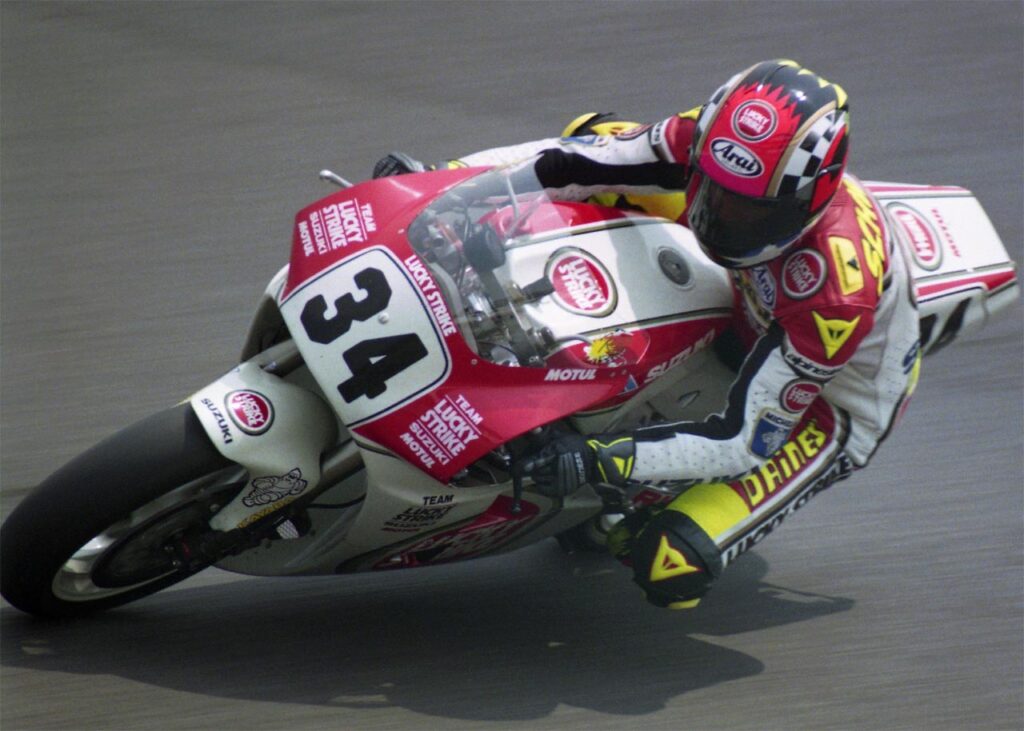
Kevin Schwantz’s 1993 RGV500 is remembered for its wild riding style and its rider’s never-say-die spirit. The Suzuki was notoriously difficult to control, yet Schwantz managed to tame it enough to win the championship. Its peaky two-stroke power delivery made each lap unpredictable. Few factory-prepared versions remain, making it one of Suzuki’s rarest machines.
This RGV500 also symbolized the end of Suzuki’s sustained presence at the top of MotoGP. After Schwantz’s win, the brand struggled to keep up with Honda and Yamaha. That makes his bike even more important, standing as the last great champion in Suzuki’s two-stroke era. Restored examples often feature prominently in exhibitions of racing heritage.
Cagiva C594 (1994)
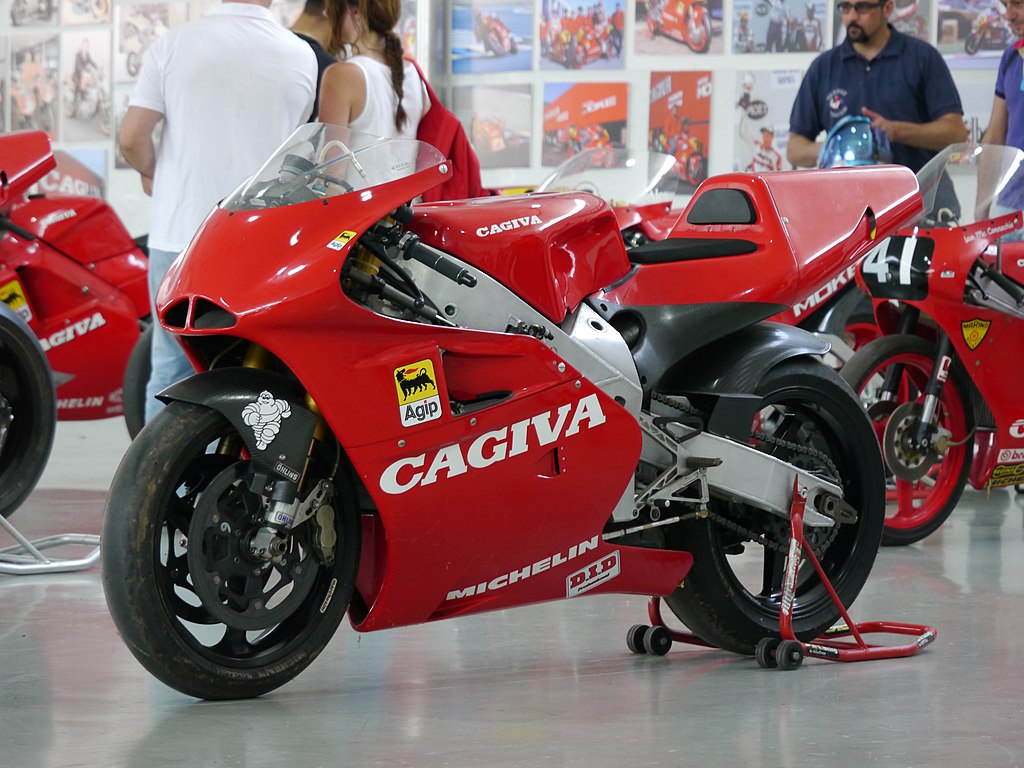
The Cagiva C594 represented a small Italian manufacturer’s fight against giants. While Cagiva lacked the resources of Honda or Yamaha, they produced a bike capable of surprising the field. Its distinctive red livery and V4 engine gave it an unmistakable identity. Only a handful of units were ever built, making it exceptionally scarce.
Despite limited success, the C594 has gained admiration for its underdog spirit. Riders like John Kocinski managed strong performances, proving the bike could challenge factory powerhouses on its day. Collectors see it as a testament to independent determination during a tough era. Today, surviving examples are guarded by enthusiasts of Italian racing history.
Aprilia RS Cube (2002–2004)
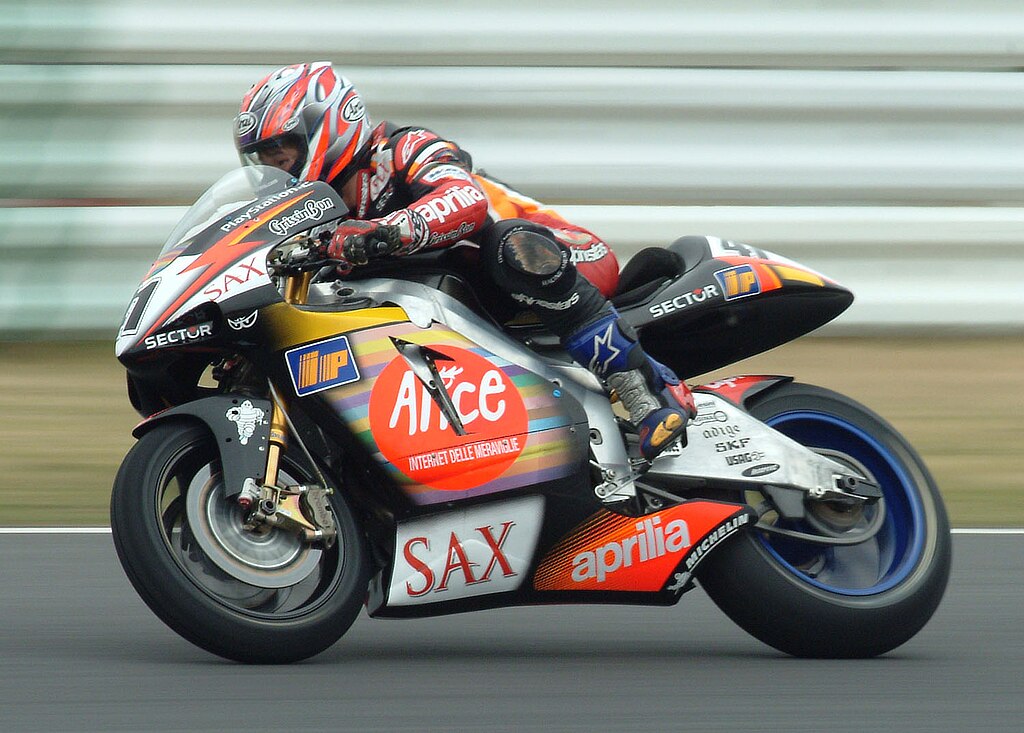
The Aprilia RS Cube is infamous for its wild performance. With pneumatic valves and ride-by-wire technology, it was ahead of its time but nearly impossible to control. Riders often struggled just to keep it upright through a full race. As a result, its production numbers remained very small.
Despite its struggles, the RS Cube has become a cult favorite. Fans respect Aprilia’s ambition in bringing advanced features into MotoGP. Though it failed to secure major results, its presence signaled bold thinking. Today, very few examples are preserved, and each one represents a daring chapter in MotoGP experimentation.
KR211V (2006)
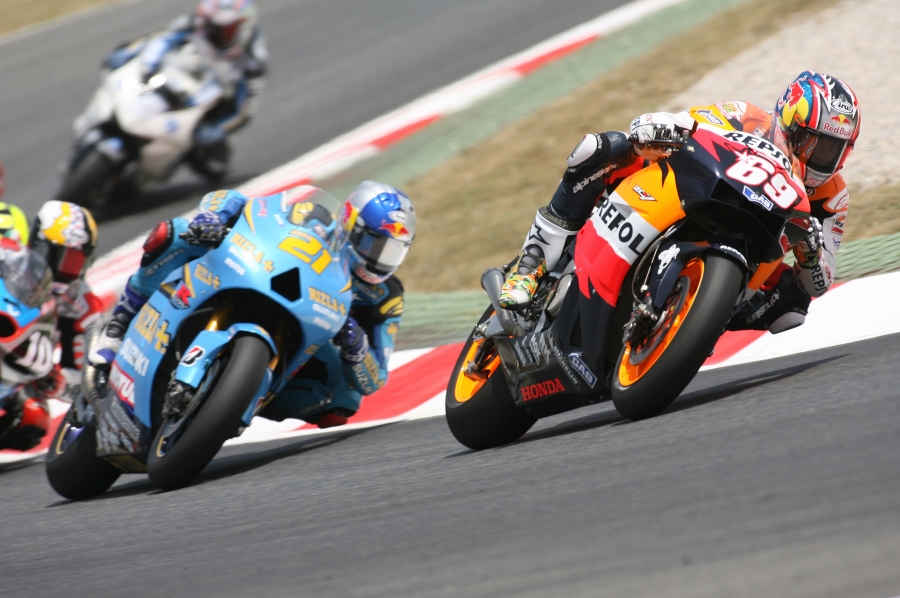
The KR211V emerged from Kenny Roberts’ collaboration with Honda. Using Honda’s V5 engine within a custom chassis, the bike offered a rare hybrid of factory power and independent design. Its brief time on the grid makes it a fascinating rarity. Only a few exist outside racing circles.
While results never matched expectations, the KR211V showed what was possible for independent constructors. It demonstrated that partnerships could produce competitive machines, even if podiums were elusive. Collectors value it as part of MotoGP’s experimental era. Its scarcity today highlights the difficulty of sustaining such projects.
Ilmor X3 (2006)
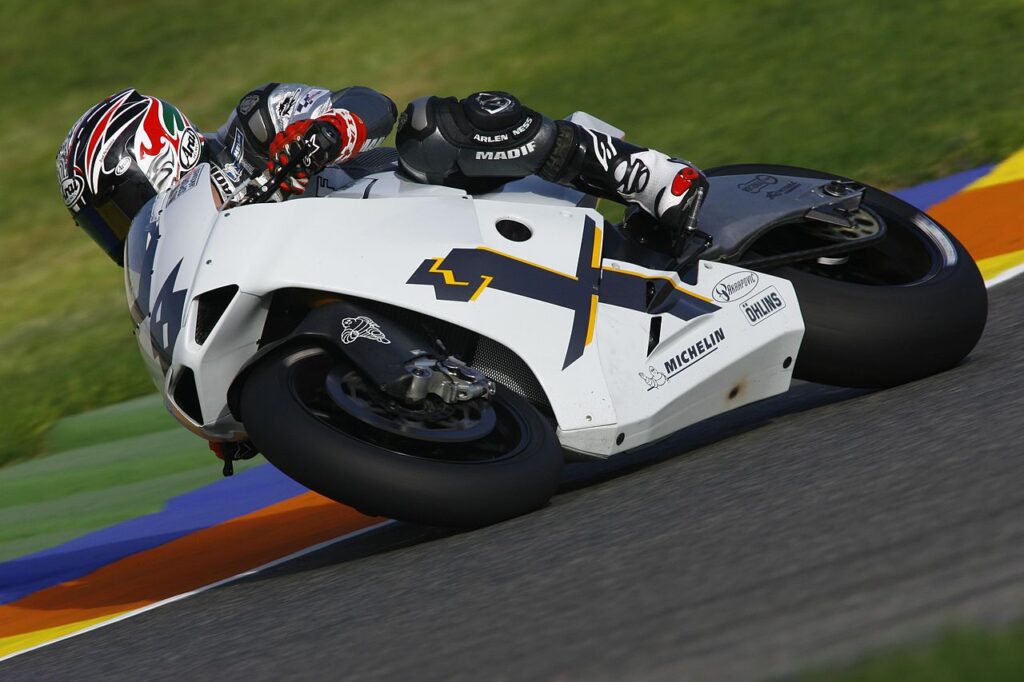
The Ilmor X3 was one of the shortest-lived MotoGP entries in modern history. Funded by Mario Illien’s company, it introduced a three-cylinder design to the new four-stroke era. The bike entered only a handful of races before the project folded. That makes it one of the rarest MotoGP machines ever.
Despite its limited success, the X3 is remembered for its bold ambition. It aimed to break into MotoGP with engineering pedigree drawn from Formula 1. Although reliability issues plagued it, the attempt remains respected. Surviving examples are now collector’s treasures, rarely seen outside private displays.
Ducati Desmosedici GP3 (2003)
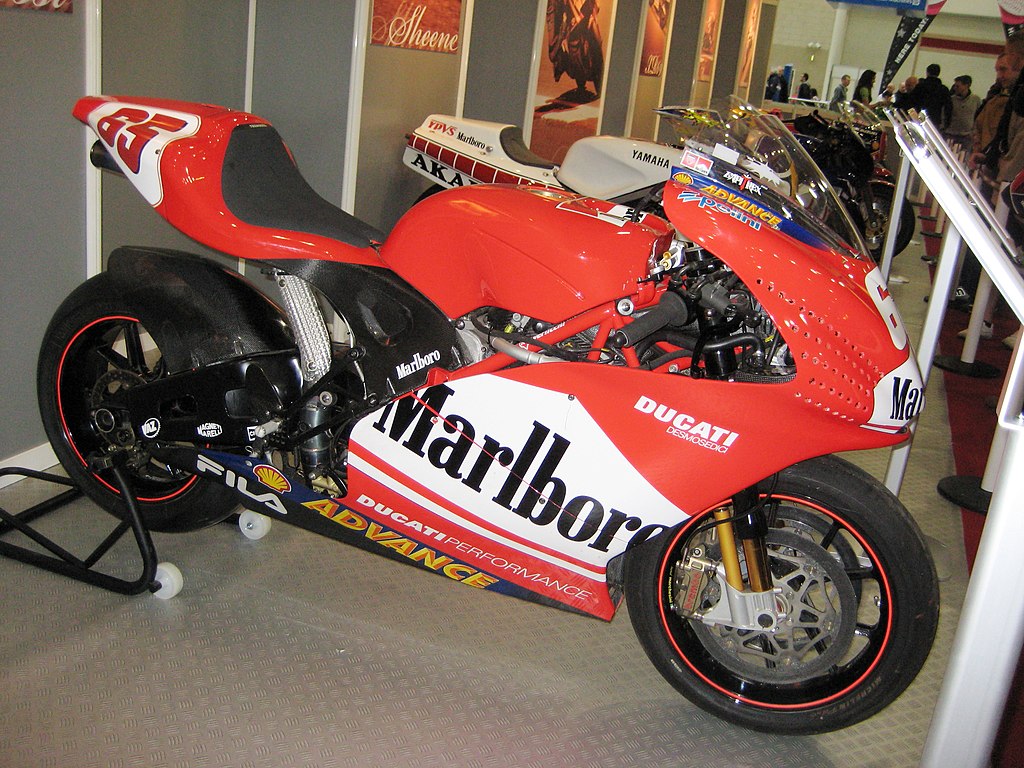
The Ducati Desmosedici GP3 marked Ducati’s official arrival in MotoGP. With its V4 engine and striking livery, it announced the Italian brand’s intent to challenge the field. The GP3 shocked many by delivering competitive results almost immediately. Production numbers were extremely low, reserved only for the factory team.
Collectors see the GP3 as a milestone, setting the stage for Ducati’s long presence in MotoGP. Its design carried influences from Ducati’s racing tradition in other categories. Though quickly replaced by newer versions, the GP3 retains an aura of rarity. Only a handful of surviving bikes remind fans of Ducati’s bold entrance.
Honda RC211V (Valentino Rossi’s 2003–2004 Machine)
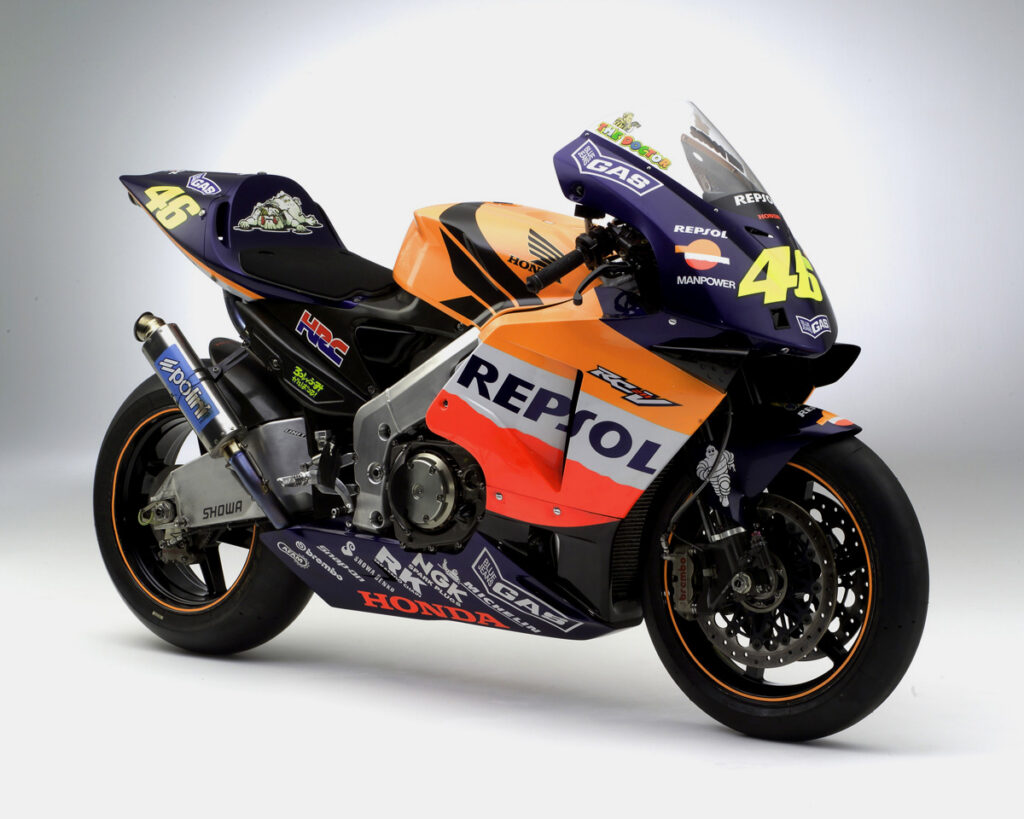
Valentino Rossi’s RC211V changed MotoGP history. With its five-cylinder engine and balanced handling, it became the bike to beat. Rossi’s back-to-back titles secured its place as one of Honda’s most celebrated machines. Because these bikes were strictly factory-prepared, only a few examples survive.
Fans associate the RC211V with Rossi’s peak years at Honda. It dominated rivals and showcased Honda’s engineering strength during the early four-stroke era. Collectors prize the machines linked directly to Rossi’s victories. Today, they are preserved as icons of early-2000s MotoGP racing.
Suzuki GSV-R (2002–2011)
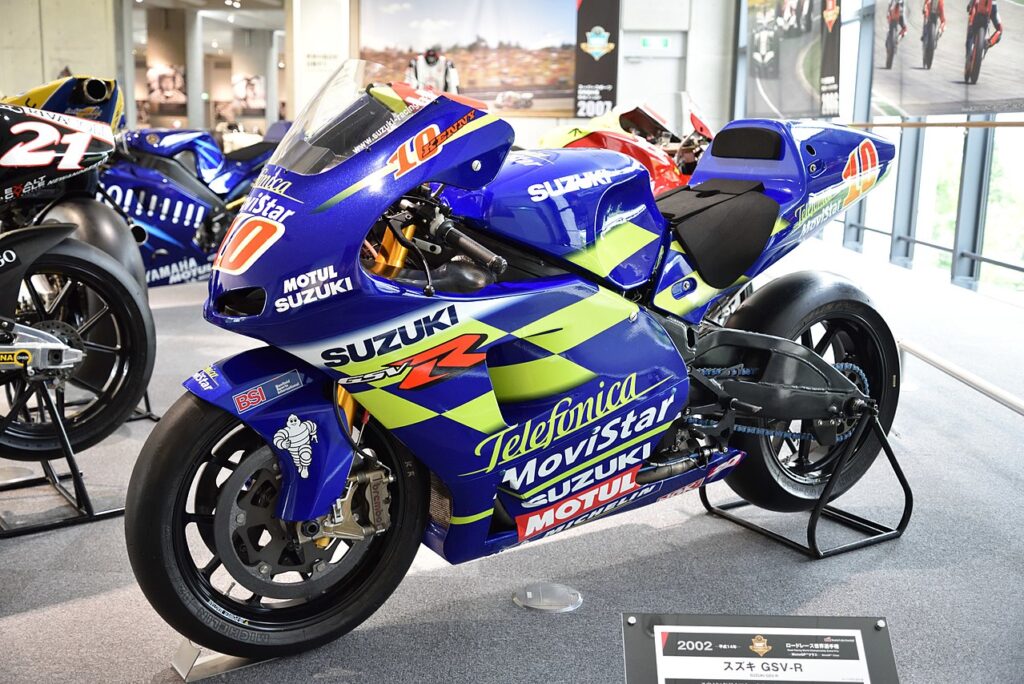
The Suzuki GSV-R represented Suzuki’s entry into the four-stroke MotoGP era. It never achieved the same success as its rivals, often struggling against Honda, Yamaha, and Ducati. Despite this, the bike carried unique engineering traits and a distinct sound. Because production was limited to factory and satellite teams, authentic models are extremely rare.
Over time, the GSV-R became more of an underdog symbol than a championship contender. Riders like John Hopkins and Chris Vermeulen showed flashes of brilliance on it, but consistent results were out of reach. Its scarcity today comes from both its limited production and Suzuki’s eventual departure from MotoGP. Collectors see it as a piece of Suzuki’s long but turbulent racing story.
Honda RC212V (Casey Stoner’s 2011 Title-Winner)
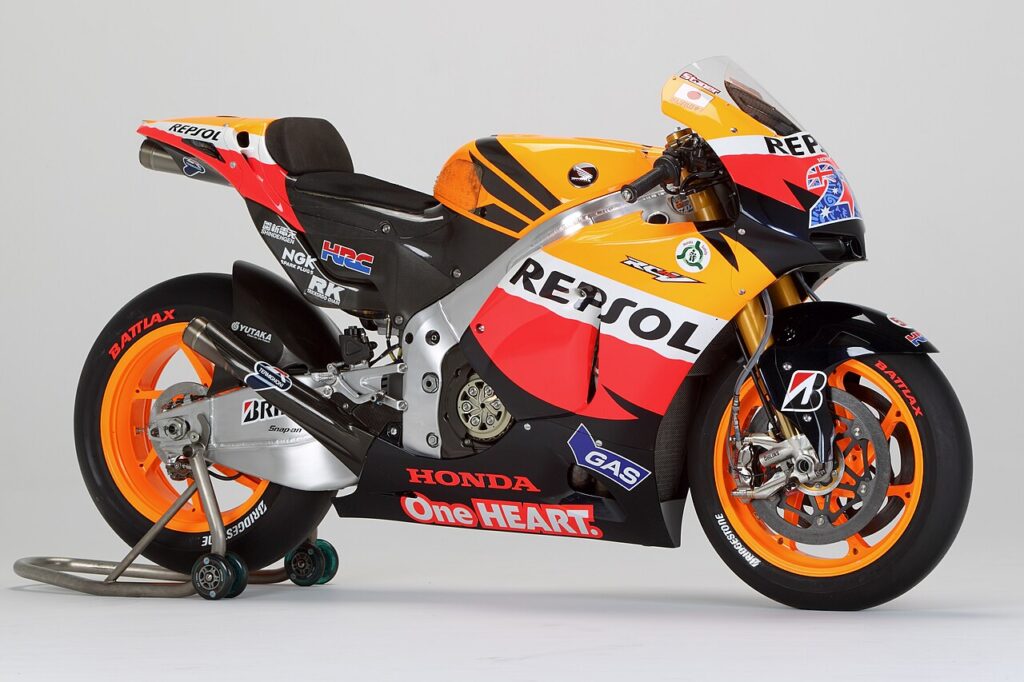
Casey Stoner’s RC212V from 2011 represents Honda at its peak dominance. With a powerful V4 engine and refined electronics, it gave Stoner the tools to dominate the season. Only factory-prepared machines were made, and they remain under Honda’s close control. Authentic examples tied to Stoner’s title are nearly impossible to obtain.
Fans remember the RC212V as the bike that brought Honda back to the top after several challenging years. Its success made Stoner’s championship season unforgettable. Today, the bike is an icon of the 800cc era. Collectors prize it as both a championship winner and a rare piece of Honda racing heritage.
Yamaha YZR-M1 (2004 Gauloises Edition, Rossi’s First Yamaha)
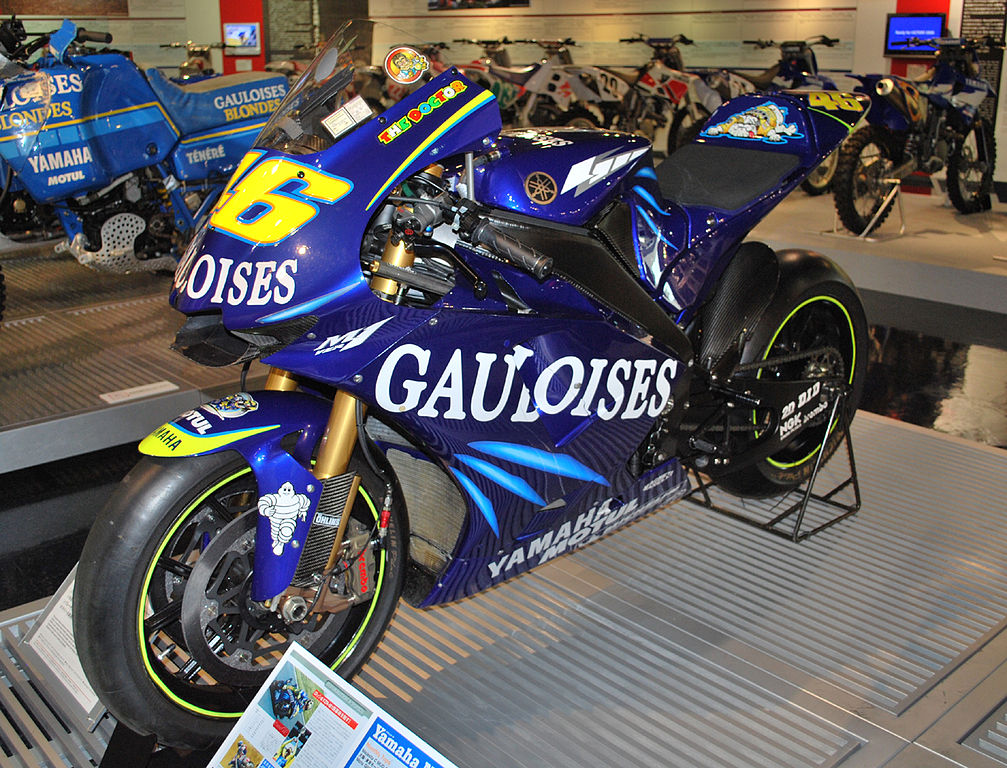
Valentino Rossi’s first Yamaha YZR-M1 from 2004 changed the course of MotoGP history. Moving from Honda, Rossi stunned the world by winning his debut race on this machine. Its Gauloises livery and iconic blue paint scheme make it one of the most recognizable bikes of all time. Because of its direct connection to Rossi’s breakthrough, it is exceptionally rare.
This YZR-M1 represents one of the most important storylines in MotoGP. Rossi proved that Yamaha could challenge Honda, sparking a legendary rivalry. Collectors regard surviving examples as priceless, often displayed in museums or team collections. It remains a symbol of how one rider and one machine changed the sport.
Kawasaki ZX-RR (2003–2009)
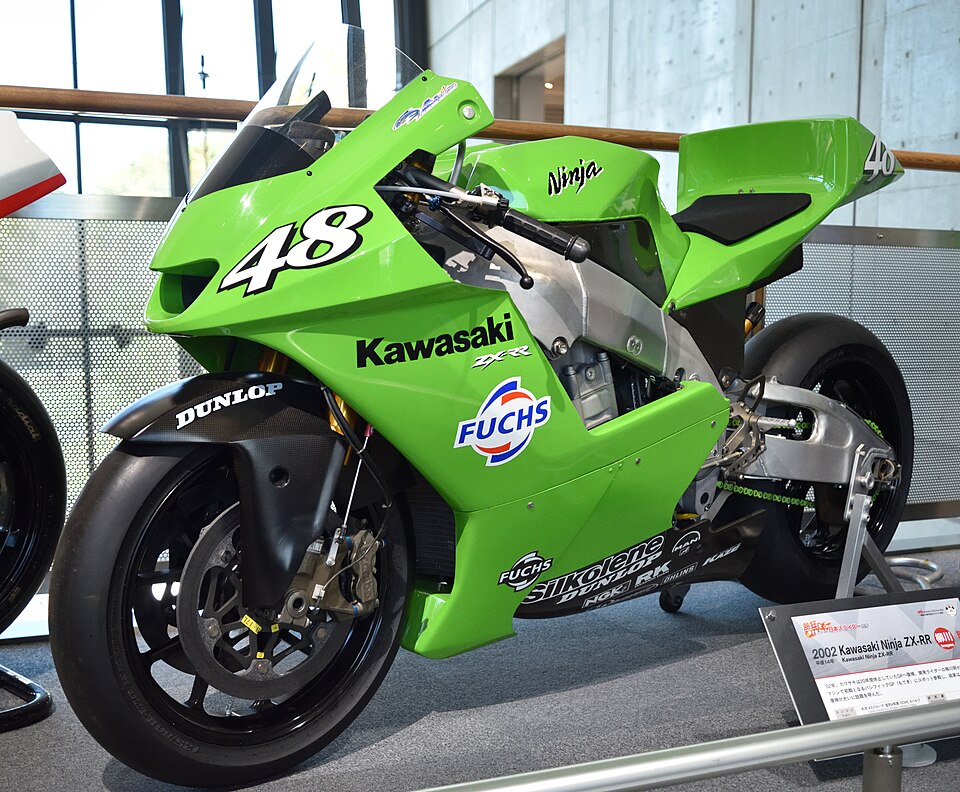
The Kawasaki ZX-RR marked the brand’s attempt to establish a long-term presence in MotoGP. Its striking green livery and distinctive sound stood out on the grid. However, performance was inconsistent, and Kawasaki withdrew after only a few seasons. Because of the abrupt exit, few authentic ZX-RR bikes remain.
Though not a championship contender, the ZX-RR is remembered fondly by fans of the brand. It carried riders like Shinya Nakano and Randy de Puniet to occasional strong results. Today, its rarity makes it a collector’s gem, representing a brief but colorful chapter in MotoGP history. The bikes that survive are mostly kept in private collections.
This article originally appeared on Avocadu.
